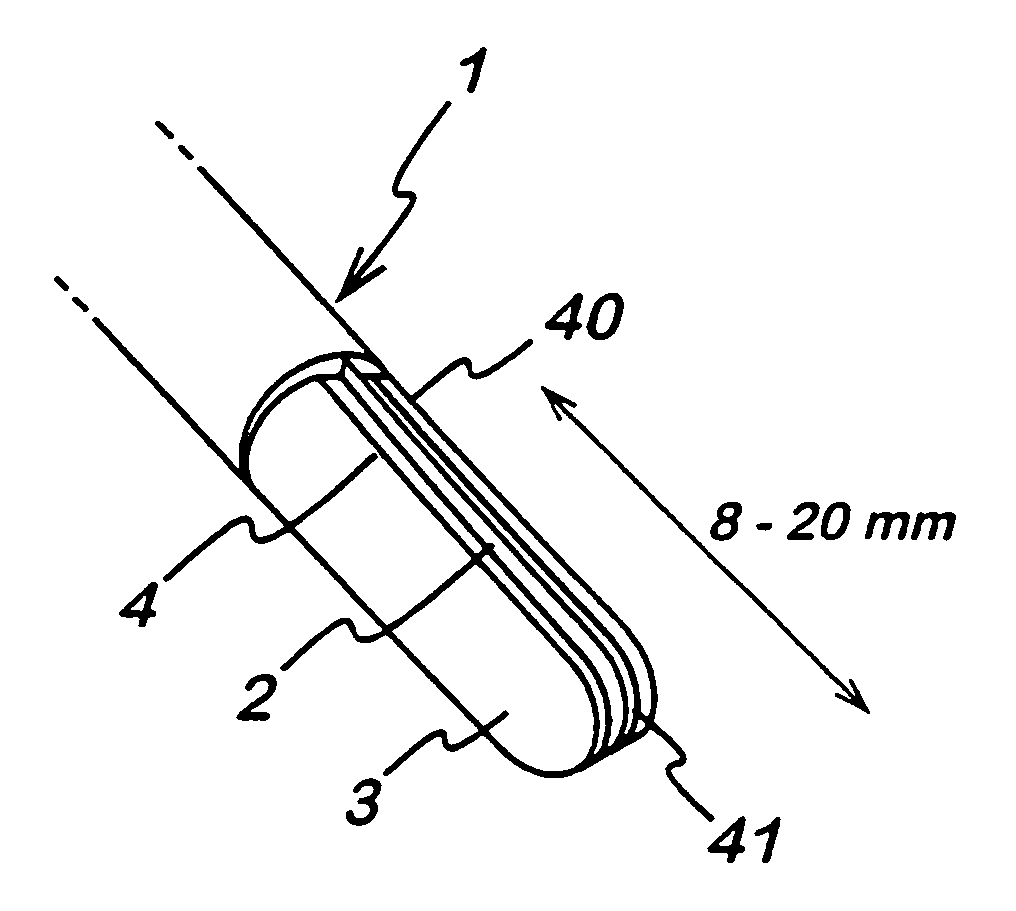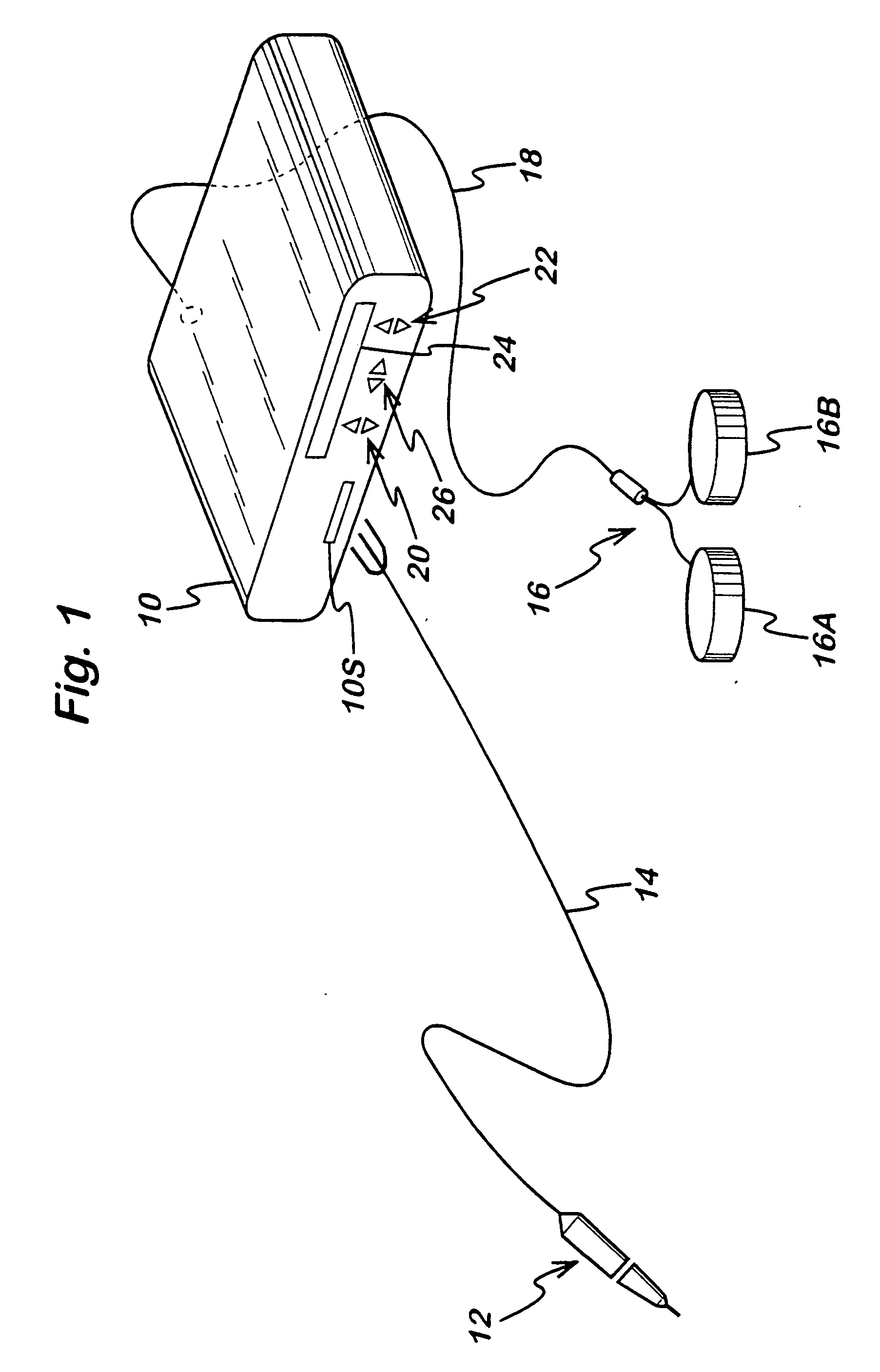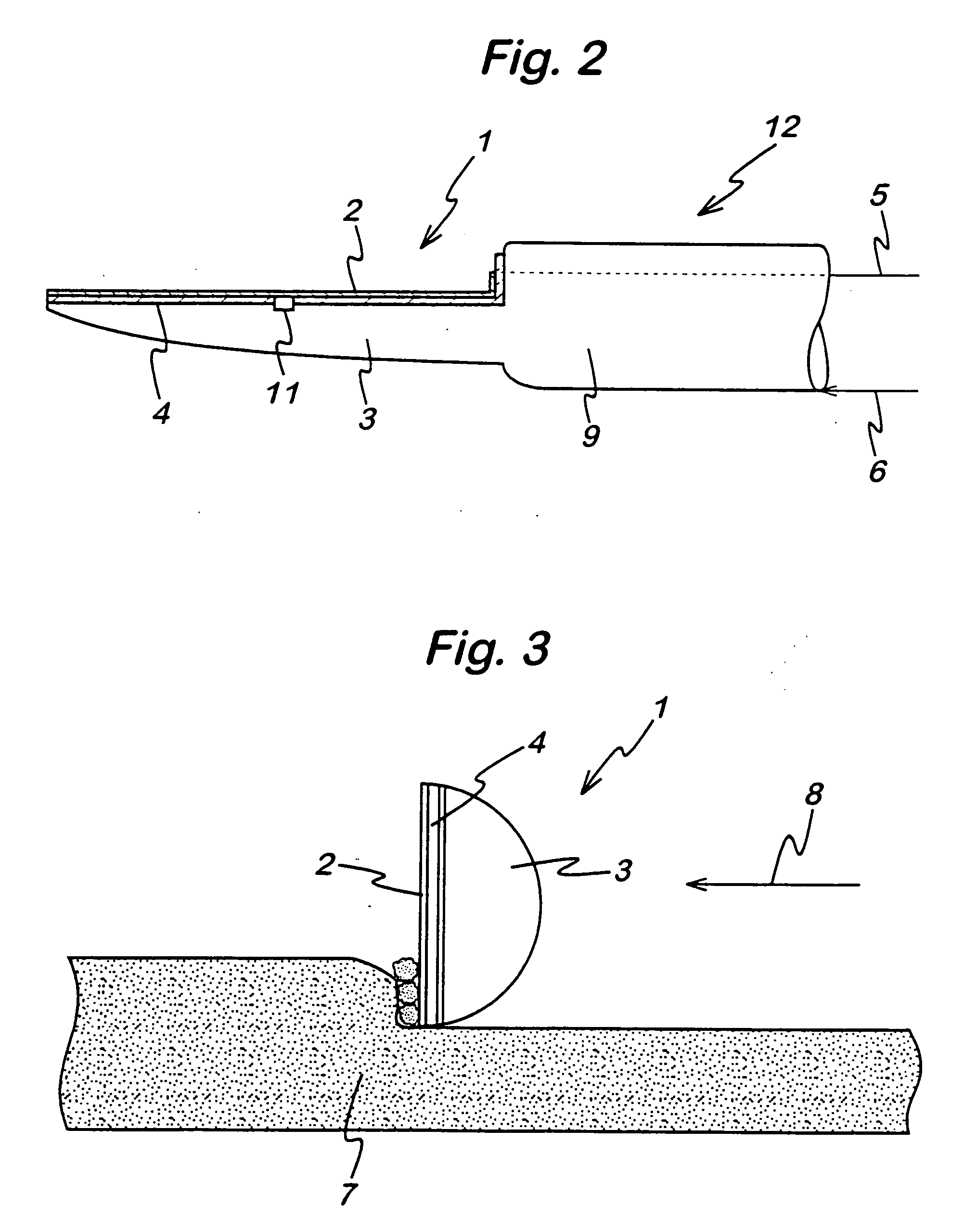Surgical system
a surgical system and cutting device technology, applied in the field of bipolar electrosurgical cutting devices, can solve problems such as difficult control of devices by surgeons, and achieve the effect of preventing heat buildup
- Summary
- Abstract
- Description
- Claims
- Application Information
AI Technical Summary
Benefits of technology
Problems solved by technology
Method used
Image
Examples
Embodiment Construction
[0039] Referring to FIG. 1, a generator 10 has an output socket 10S providing a radio frequency (RF) output for an instrument 12 via a connection cord 14. Activation of the generator 10 may be performed from the instrument 12 via a connection in the cord 14, or by means of a footswitch unit 16, as shown, connected to the rear of the generator by a footswitch connection cord 18. In the illustrated embodiment, the footswitch unit 16 has two footswitches 16A and 16B for selecting a coagulation mode and a cutting mode of the generator 10 respectively. The generator front panel has push buttons 20 and 22 for respectively setting coagulation and cutting power levels, which are indicated in a display 24. Push buttons 26 are provided as an alternative means for selection between coagulation and cutting modes.
[0040] Referring to FIG. 2, the instrument 12 comprises a blade shown generally at 1 and including a generally flat first electrode 2, a larger second electrode 3, and an electrical in...
PUM
 Login to View More
Login to View More Abstract
Description
Claims
Application Information
 Login to View More
Login to View More - R&D
- Intellectual Property
- Life Sciences
- Materials
- Tech Scout
- Unparalleled Data Quality
- Higher Quality Content
- 60% Fewer Hallucinations
Browse by: Latest US Patents, China's latest patents, Technical Efficacy Thesaurus, Application Domain, Technology Topic, Popular Technical Reports.
© 2025 PatSnap. All rights reserved.Legal|Privacy policy|Modern Slavery Act Transparency Statement|Sitemap|About US| Contact US: help@patsnap.com



